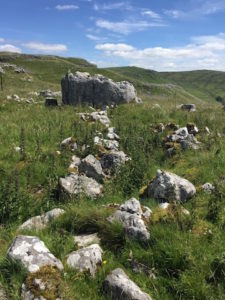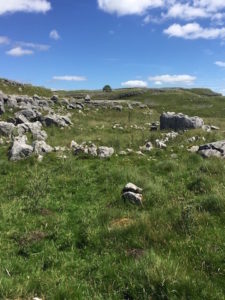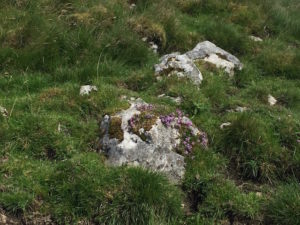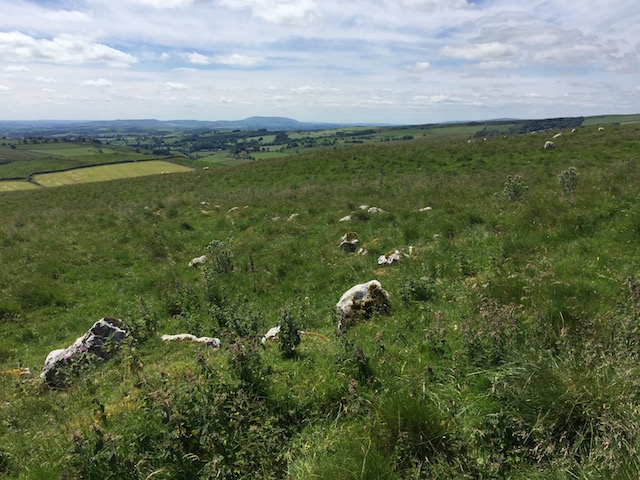A small but very select group visited the St Helens’ Chapel dig at Malham. This visit was in lieu of a reciprocal visit by Ingleton Archeology Group. Dr David Johnson, dig leader, outlined the main finds so far. The nave pit exposed a north west buttress which was probably a later addition to the chapel. Another rather large trench exposed a stone bank with three huge boulders. As per usual the dig probably raised more questions than it answered. Not all turned out to be as the geophys promised. Many small finds included and were assumed to be, hand made metal nails and various pieces of pottery, glass, lead and at least two small flints .

Hollow walled passage way next to Hutment

Hutment at Stridebutt Edge
Using Arthur Raistrick as a guide we then ascended up to Stridebutt Edge a high limestone terrace to find a most interesting complete Iron Age settlement with several enclosures and hutments. We were also able to pick out a trench type walled passage 2-3′ in width and perhaps 20′ long and a double banked circle approximately 60′ diameter. Our position was also useful to spot the Iron Age lynchets and Mediaeval field systems.
On returning to the road we progressed upwards and turned left off the road to visit the remains of a monastic sheephouse, it was rather more difficult to identify a series of rectangular earthworks outlining a large building which may have housed up to 50 ewes with a large outside enclosure and a small building which possibly housed the shepherd and foldmen. Possibly in use from 1290 to the Dissolution of the Monastaries.
All in all a good day with interesting finds and in addition we were able to spot the wonderful limestone flora. This area is particularly rich in ancient history from Mesolithic, Iron and Bronze age to Mediaeval and would bear further fruitful exploration at a later date.

Limestone Flora
